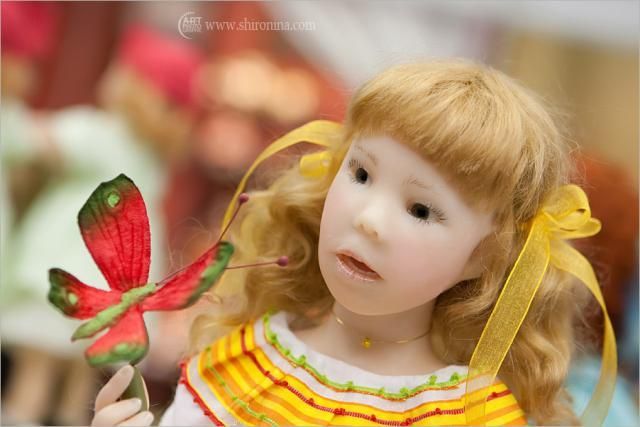|
|
International Doll Salon, Moscow, Russia
|
• Early history and traditional dolls
The earliest dolls were made from available materials like clay, stone, wood, bone, ivory, leather, wax, etc. Archaeological evidence places dolls as foremost candidate for oldest known toy. Wooden paddle dolls have been found in Egyptian tombs which date to as early as 2000 BCE. Dolls with movable limbs and removable clothing date back to at least 200 BCE. Greek dolls were made of clay and articulated at the hips and shoulders. There are stories from ancient Greece around 100AD that show that dolls were used by little girls as playthings. In Rome dolls were made of clay, wood or ivory. Dolls have been found in the graves of Roman children. Like children today, the younger members of Roman civilization would have dressed their dolls according to the latest fashions. When Greek and Roman girls got married they would dedicate their doll to a Goddess. Rag dolls are traditionally home-made from spare scraps of cloth material. Roman rag dolls have been found dating back to 300BC.
Traditional dolls are sometimes used as children's playthings, but they may also have spiritual, magical and ritual value. There is no defined line between spiritual dolls and toys. In some cultures dolls that had been used in rituals were given to children. They were also used in childrens education and as carriers of cultural heritage. In other cultures dolls were considered too laden with magical powers to allow children to play with them.
African dolls are used to teach, and entertain, they are supernatural intermediaries, and they are manipulated for ritual purposes. Their shape and costume vary according to region and custom. Frequently dolls are handed down from mother to daughter. Akuaba are wooden ritual fertility dolls from Ghana and nearby areas. The best known akuaba are those of the Ashanti people, whose akuaba have large, disc-like heads. Other tribes in the region have their own distinctive style of akuaba.
|
|









